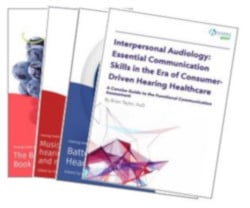The first three parts of this piece (one, two, three) discussed some issues that caused consternation in the past. While repetitive for many audiologists, perhaps some readers have a little better understanding of how past regulatory confrontations have influenced Audiology. In reviewing these issues, here are some personal conclusions.
Lessons to consider:
- Lots of input should go into licensing boards, rules committees, and groups that try to regulate our field. Input should be general and simple so that the resulting bureaucracy does not impede or become unnecessarily bogged down by our future interpretations. Simple is not easy, but it’s necessary.
- The fewer regulations, the better. Rules from almost any government entity are usually enacted in order to right a wrong. In a perfect world, there would be no wrong. In a semi-perfect world, the wrongs would be righted by those who are doing the wronging. In the absence of the wronging group taking appropriate action, see #1 above.
- It is a reasonable bet that PSAPs or OTC hearing devices will be taxed in various manners and regulated by multiple agencies. When the issue of sales tax arises with the coming changes in device distribution, how this will be managed may have a significant impact on all amplification devices as well as other aspects of Audiology. There likely will be confusion no matter what.
If these new devices are not subject to the manufacturing and performance restrictions now in place for prosthetic hearing instruments, and if the new devices occupy no place in auditory rehabilitation, why is anyone concerned with their performance? Hearing devices will be sold to consumers despite any controls. If there is sufficient evidence to support professional rehabilitation efforts, and if these devices do not provide the necessary rehabilitative support, it should be left to clinicians to make that determination. If, on the other hand, these devices succeed in solving a patient’s hearing problems, any professional input will have been proved to be unnecessary. Clinicians will have a role in either scenario.
- It will be difficult to maintain the “duality” of hearing devices. Should these devices be prostheses and subject to regulation? Or, should all of them be non-medical devices and subject only to the rules and influences of business? There are advantages to both approaches. Unnecessary protectionism is not a good thing.
- It feels good to pass regulations or laws that appear to be beneficial to our patients and our field (hopefully in that order). It is a mistake to believe that laws and regulations will solve problems. Implementation details that follow will always be another source of difficulty (if history is a predictor). Continued vigilance and keeping current and active in the underlying process is necessary. Without continuing evaluation, the “detours” of technology, the “work-arounds” of clever, sometimes unscrupulous people, and an attitude of “others should do it”, will cause similar issues to those faced today.
Continuing education has become an issue that probably will not go away. People, including clinicians, will function in a manner that they construe is in their best interest. Many times, learning new things is difficult and expensive, and many times is not seen as necessary as it should be. How to better manage CE will be difficult. More than likely, it will be an informed public that demands better performance, and the penalty for poor performance may involve rules that do nothing.
- Instruments will continue to play a dominating role in audiology and rehabilitation. We had best be prepared for several contingencies.
Viable Future?
Recently, there was an informative article in an ASHA publication[1]. An Audiologist in a private practice employs aural rehabilitation in his office clinic to not only financially enhance the practice, but more importantly to increase patient success with amplification.
For an anecdotal opinion of the benefits of utilizing a somewhat different approach to making rehabilitation an important part of hearing care, as well as maintaining reasonable margin of profit, one should read this article. In the future, this type of approach would seem to be valuable, especially if one considers altering prices (unbundling) in order to compete with other retail alternatives.
Regarding competition, I suspect that many can pose arguments against. But, unless a better alternative is offered, those arguments will be in vain. As an example, consider the Costco model. There are no shortages of opinions on Costco’s methods, but upon close inspection, few bad opinions withstand inspection. Also, most consumers like Costco.
While there may be a few stores that do not adhere to the clinical standards of fitting hearing aids, closer inspection would show that Costco employs a quality of care and a standard of practice as high as many audiologists[2]. Why would they employ lesser standards for hearing aids than for hot dogs?
I am not sure any of the lessons I have learned over the years will help anyone who is faced with legal, regulatory, retail, or ethical issues. I do know that, were I in the same position today, I would advocate differently than I did in the past. Perhaps other audiologists would agree.
[1] Trembath, Stuart, Top of the License to You, ASHA Leader, Jan, 2018.
[2] Personal Communication, Source prefers to remain anonymous.







